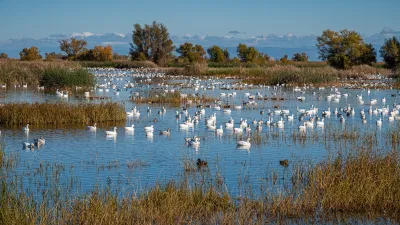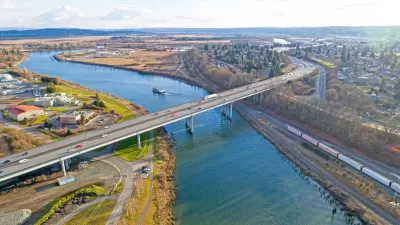The environmental awakening of the 1970s led to landmark federal laws that have helped heal our natural systems. The growing “Rights of Nature” movement seeks to create new protections to respond to emerging ecological threats.
"With Earth Day around the corner, it’s a good time to step back and see how we’ve been doing since the first Earth Day in 1970, when 20 million people took to the streets to protest rivers on fire, DDT-poisoned birds, sewage on beaches, and a devastating oil spill off the pristine Santa Barbara coast," writes Terry Tamminen.
"Since those early days, we have improved sewage treatment plants and banned DDT, but new threats to human and environmental health are mounting – pollution from hydraulic fracking, leaking oil pipelines, nuclear disasters, and other localized impacts on communities." Add in global climate change and you have a recipe for a “transition of the Earth’s ecosystems into a state unknown in human experience.”
"These new and very visible threats are igniting a fresh grassroots call for more action that is commensurate with such challenges in ways the existing laws seem unprepared to address," says Tamminen. "Enter the 'Rights of Nature' movement," an expansion of environmental protections that has been adopted in Bolivia, Ecuador, and over three-dozen U.S. municipalities.
FULL STORY: Emebedding The Rights Of Nature In Our Legal Code

Alabama: Trump Terminates Settlements for Black Communities Harmed By Raw Sewage
Trump deemed the landmark civil rights agreement “illegal DEI and environmental justice policy.”

Planetizen Federal Action Tracker
A weekly monitor of how Trump’s orders and actions are impacting planners and planning in America.

The 120 Year Old Tiny Home Villages That Sheltered San Francisco’s Earthquake Refugees
More than a century ago, San Francisco mobilized to house thousands of residents displaced by the 1906 earthquake. Could their strategy offer a model for the present?

Ken Jennings Launches Transit Web Series
The Jeopardy champ wants you to ride public transit.

BLM To Rescind Public Lands Rule
The change will downgrade conservation, once again putting federal land at risk for mining and other extractive uses.

Indy Neighborhood Group Builds Temporary Multi-Use Path
Community members, aided in part by funding from the city, repurposed a vehicle lane to create a protected bike and pedestrian path for the summer season.
Urban Design for Planners 1: Software Tools
This six-course series explores essential urban design concepts using open source software and equips planners with the tools they need to participate fully in the urban design process.
Planning for Universal Design
Learn the tools for implementing Universal Design in planning regulations.
Clanton & Associates, Inc.
Jessamine County Fiscal Court
Institute for Housing and Urban Development Studies (IHS)
City of Grandview
Harvard GSD Executive Education
Toledo-Lucas County Plan Commissions
Salt Lake City
NYU Wagner Graduate School of Public Service





























